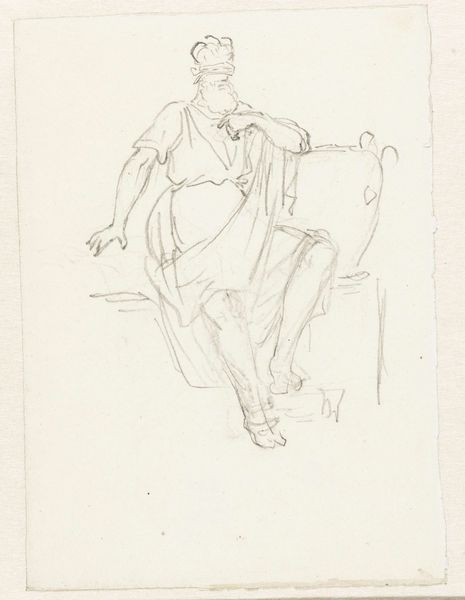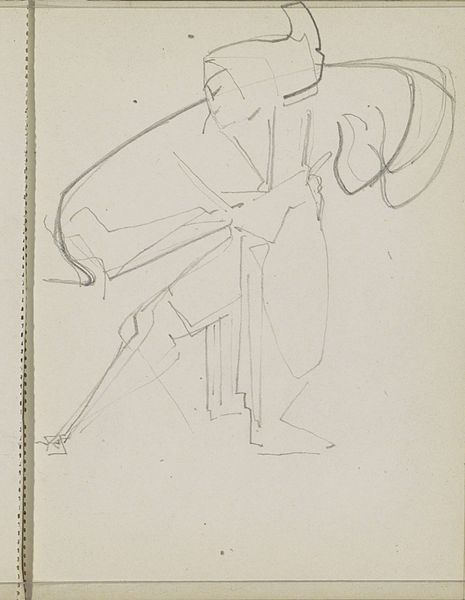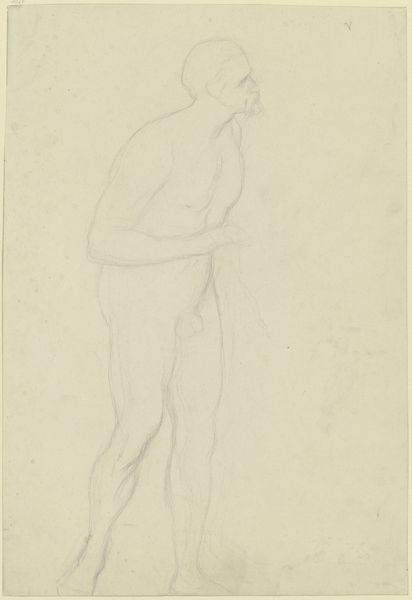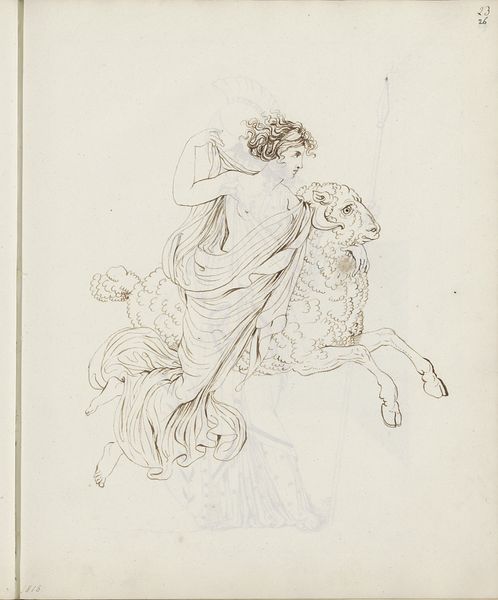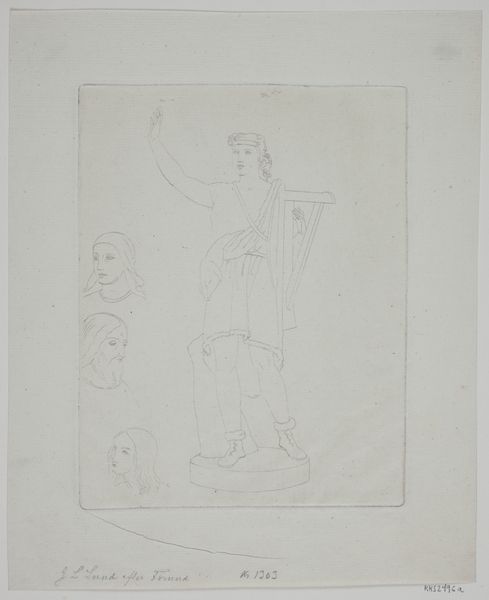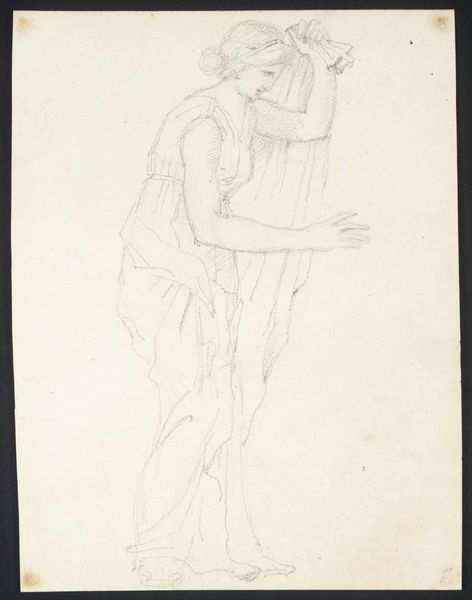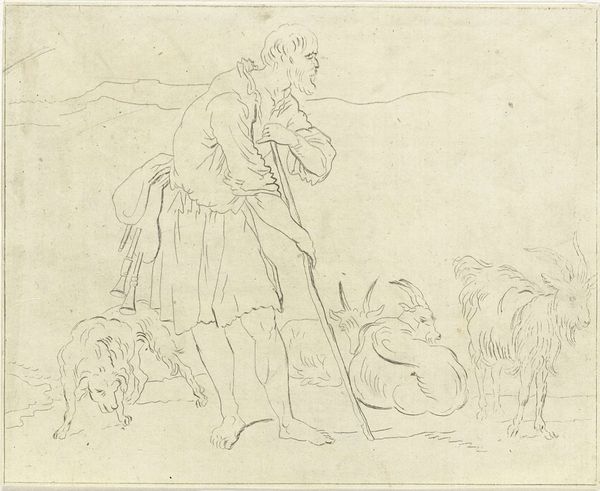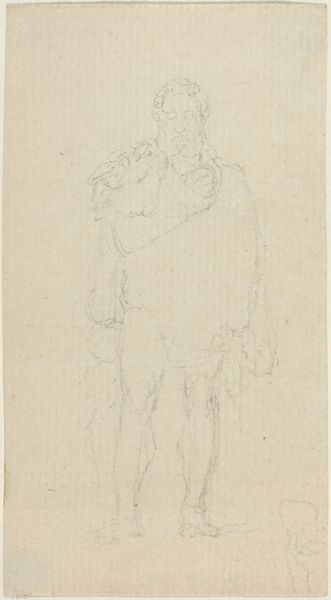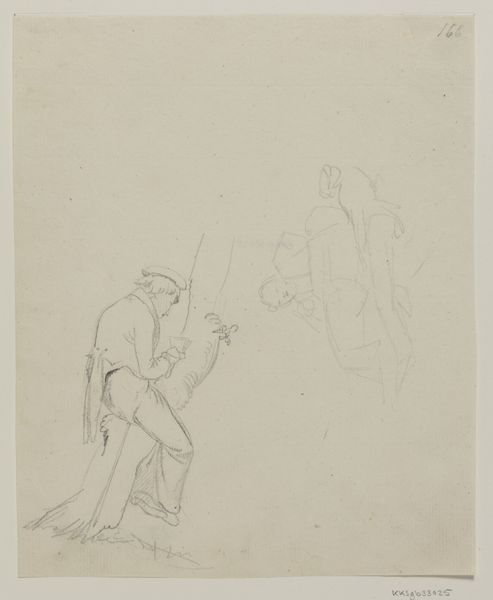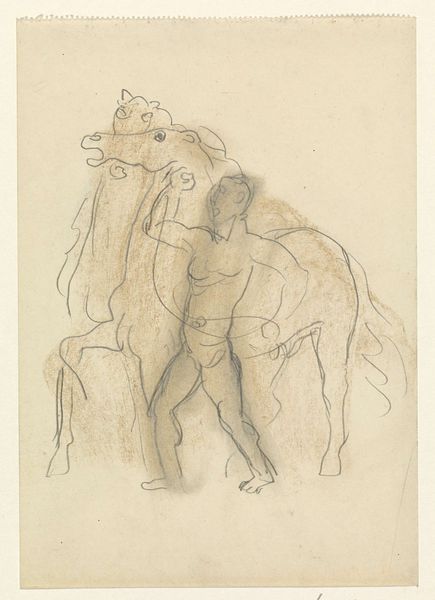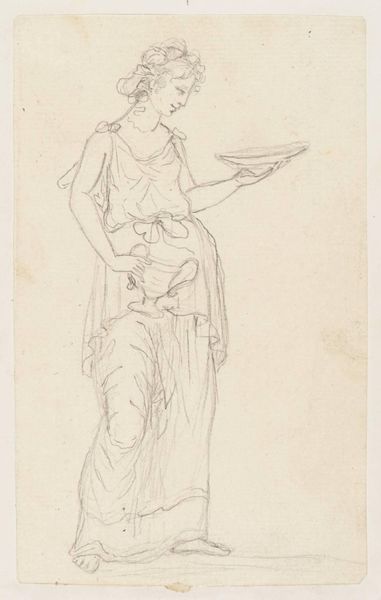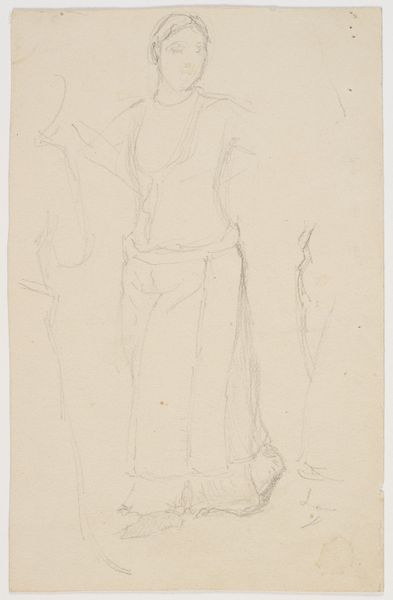
drawing, pencil
#
portrait
#
drawing
#
imaginative character sketch
#
toned paper
#
light pencil work
#
landscape
#
classical-realism
#
cartoon sketch
#
personal sketchbook
#
idea generation sketch
#
ink drawing experimentation
#
geometric
#
pencil
#
sketchbook drawing
#
storyboard and sketchbook work
#
academic-art
#
sketchbook art
Dimensions: height 375 mm, width 272 mm
Copyright: Rijks Museum: Open Domain
Curator: Here we have "Man en paard," or "Man and Horse," a pencil drawing by Johan Michaël Schmidt Crans, made sometime between 1840 and 1907. It is an unassuming work on paper. Editor: The delicacy of the lines is what strikes me first. It’s a gossamer rendering, barely there. And yet, the monumentality of the figures is also undeniable. There's a curious tension. Curator: The ethereal quality you're noticing probably stems from the artist's process. Given that it's a pencil drawing, consider the materials at hand. The type of pencil, the texture of the paper—these factors would've played a role in achieving that light touch. Schmidt Crans may have wanted a study more focused on forms rather than minute details. Editor: Absolutely. Speaking of forms, the motif of a man and a horse has powerful roots. Consider the centaur from classical mythology, representing the struggle between rationality and animal instinct. Or perhaps Schmidt Crans was alluding to Saint George, the archetypal slayer of dragons, embodying courage and righteousness? The symbolic weight of such imagery is palpable here, even in its unfinished state. Curator: Intriguing thoughts, but let's also remember the context of the artist's training. He likely received academic art instruction, emphasizing draftsmanship. Think of those 19th-century atelier exercises—copying classical casts to master anatomy. This drawing might be a skillful demonstration of technique intended to underscore artistic expertise and discipline for fellow members of the cultural sphere. Editor: Fair enough. But that doesn’t negate the enduring power of the man-and-beast pairing, however unconsciously invoked. This simple drawing becomes an allegory for control, instinct, and perhaps even the uneasy relationship between humanity and the natural world. The very lightness hints at a transient, fragile state of balance. Curator: Yes, there's a fleeting sense embedded within its careful rendering. By analyzing the composition as a technical exercise as well as interpreting any representational weight we acknowledge and appreciate both process and meaning. Editor: A fleeting sense it is! This certainly provides plenty to ponder.
Comments
No comments
Be the first to comment and join the conversation on the ultimate creative platform.
